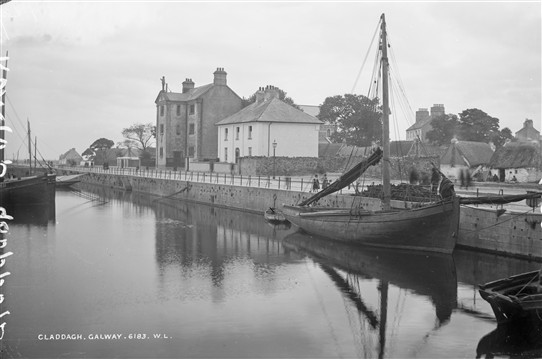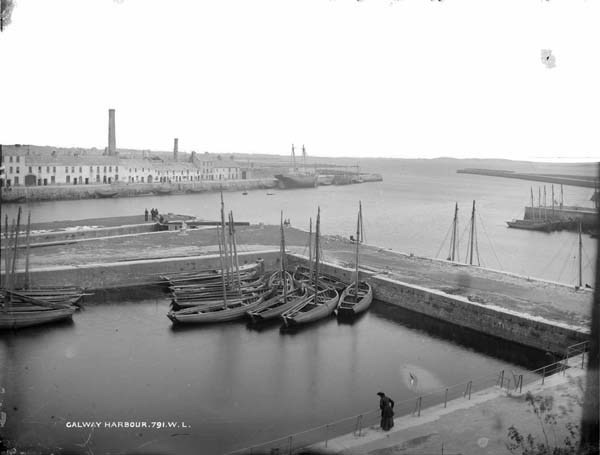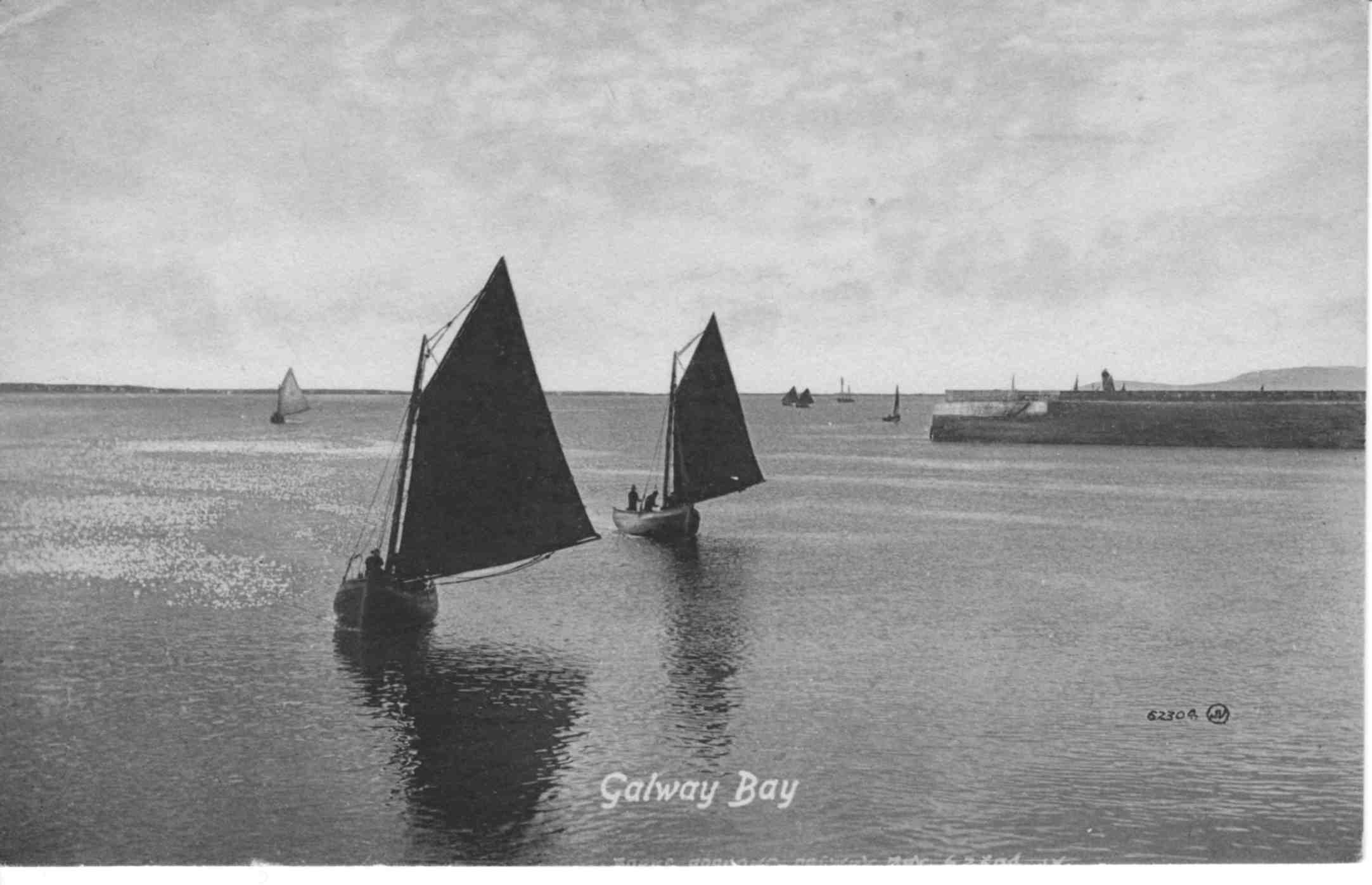The traditional boat of the Claddagh fishermen was the unique Claddagh or Galway Hooker, named after the hooked fishing lines used before the introduction of nets.
The hooker was constructed by hand using tarred timbers and was blackened by a kind of emulsion of creosote and coal. Its sails consisted of three brown sails, the main sail, the foresail on either side of the mast and a jib sail extended beyond the bow. The special rust colour of the sails came from being soaked in a solution made from tree bark, a process known as "barking".
There were four types of hooker, each of a different size: an bád mór, an leathbhád, an gleoiteog agus an púcán.
During the 19th century the Claddagh fishing industry went into decline due to increasing competition from larger trawlers which were fishing in Galway Bay. This gradually led to reduction in the hooker fleet as the larger and more efficient trawlers began to take over. This trend continued into the 20th century and as a result the hooker fleet was decimated. In 1980 there was no Claddagh hooker to take the Dominican priest out to bless Galway Bay. This was the first time this ever happened in the Claddagh.
In the past few years there has been a reversal in the fortunes of the Galway hooker and some groups and individuals in both Galway and Conamara have began to restore old boats and build new ones. Cumann Húicéirí na Gaillimhe, the Galway Hooker Association,







